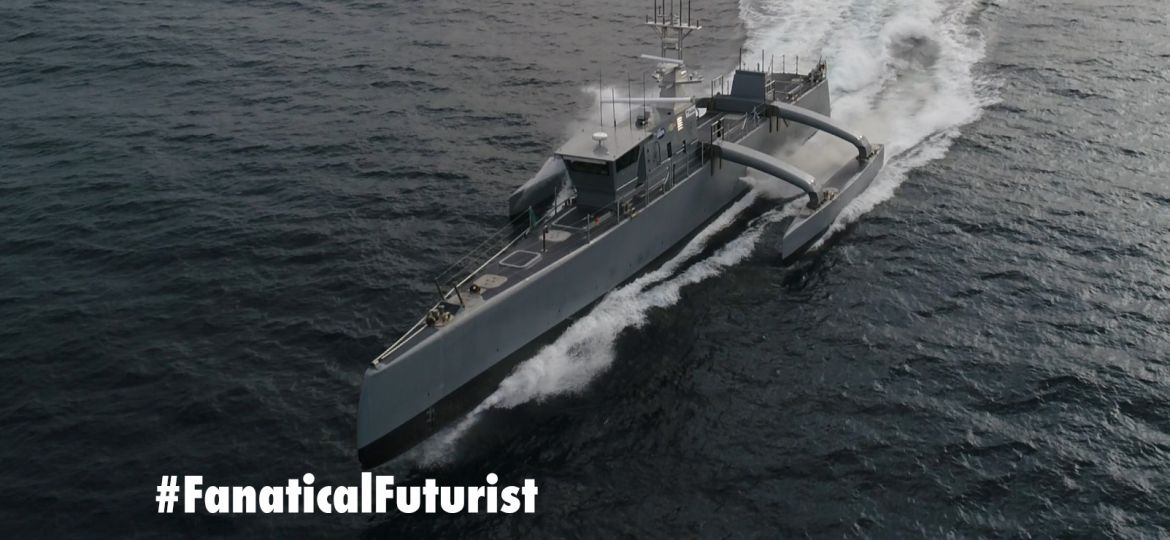
WHY THIS MATTERS IN BRIEF
The Sea Hunter is the world’s first fully autonomous warship, and it’s just passed trials – next stop official duty.
After just under a year at sea DARPA has finally completed the sea trials of the world’s first fully autonomous warship, Sea Hunter, a submarine hunting drone ship that can cross the open seas without a human crew for months at a time, and they have just officially handed over the ship’s development to their project partner, the Office of Naval Research, which has already begun fine tuning the drone’s autonomous features.
The Navy has also renamed the drone and they now call it a “Medium Displacement Unmanned Surface Vehicle,” or MDUSV for short, which, frankly, isn’t any better than its old name, Anti-Submarine Warfare Continuous Trail Unmanned Vessel, or ACTUV. I’ve also got a feeling many people will still stick to calling it Sea Hunter, that is unless the US Navy can come up with an even better nickname.
Sea Hunter Undergoing Trials
Defense contractor Leidos started building Sea Hunter in 2014 and DARPA conducted the first speed tests in April 2016, with the first operational trials last December, christening the 132-foot self-driving ship “Sea Hunter” within the same month. The drone has the ability to hunt foreign owned stealthy submarines, China and Russia are known for having big submarine fleets that both regularly penetrate US waters, such as this Russian nuclear capable drone submarine that was spotted by the Pentagon last year.
In DARPA’s announcement, is said Sea Hunter could become a “new class of vehicle under the Navy,” and the military division plans to conduct more testing in order to develop new automated weaponry and sensor systems, new mission specific autonomous behaviours and autonomous coordination with, eventually, other multiple Sea Hunters, and if the Navy wants to deploy a fleet of submarine-hunting drones, which they probably will, then they’ll need to be able to add those capabilities to Sea Hunter’s features, especially the last one.
















